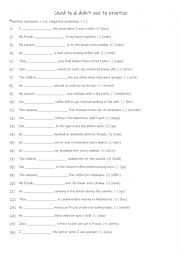
|
A2+-B1+ Used to & didn�t used to
Students complete the sentences using the given verbs. Positive sentences = (+). Negative sentences = (-). There are 13 positive and 13 negative sentences. Answers on page 2.
Level: elementary
Age: 8-100
Type:
Downloads: 129
|
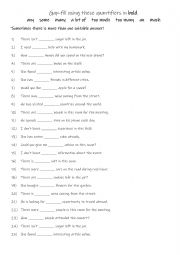
|
A1+-A2 Gap-fill using the 8 quantifiers
Quantifiers help students specify the amount or number of something. This precision allows them to convey their message more accurately. Using a range of quantifiers allows people to vary their language, making speech or writing more engaging and less repetitive. For instance, saying "a few" instead of always using "some" can make your communicatio...
Level: elementary
Age: 8-100
Type:
Downloads: 103
|
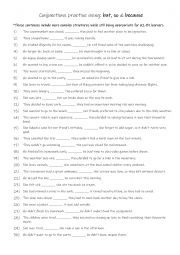
|
A2-B1 Conjunctions practise using: but, so & because
These sentences include more complex structures while still being appropriate for A2-B1 learners. Students read the sentences and complete the gap-fill with the correct conjunction. Answers on page 2.
Level: intermediate
Age: 10-100
Type:
Downloads: 105
|
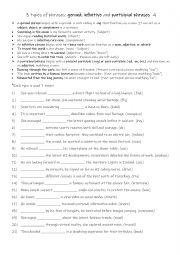
|
B1+-C1 3 types of phrases gerund, infinitive and participial phrases 4
First, students need to familiarise themselves with the 3 types of phrases and their use. Then they read the sentences to work out which one is needed to complete the gap-fill. Each verb pattern is used 7 times! Answers on page 2.
Level: intermediate
Age: 11-100
Type:
Downloads: 124
|

|
A2+-B1 Adjective + preposition + gerund 4
Learning adjective + preposition + gerund is essential for natural and fluent English. These structures are common in everyday speech, writing, and exams. They help express ideas accurately, but since prepositions don�t always follow logical rules, mastering them prevents common mistakes and improves overall communication.
Level: elementary
Age: 10-100
Type:
Downloads: 138
|
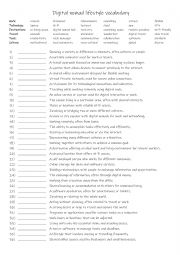
|
A2+-B1 Digital nomad lifestyle vocabulary
First, students need to familiarise themselves with the 36 words and their meanings. Then they read the definitions to see which one is being described and write that word in the space provided Answers on page 2.
Level: intermediate
Age: 10-100
Type:
Downloads: 132
|
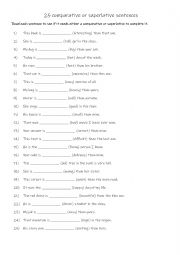
|
Comparative or superlative sentence practise 1 A
Students read each sentence to see if it needs either a comparative or superlative to complete it. Answers on page 2. In worksheet 1 B there is a generic speaking reinforcement activity using 25 of the base form adjectives in this worksheet.
Level: elementary
Age: 9-100
Type: worksheet
Downloads: 128
|
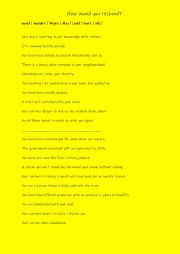
|
How would you respond?
This worksheet uses a variety of modal verbs to say how you would respond to 20 different situations. For lower level students, I normally cut the sheet in half Student A / Student B as they tend to read the question rather than developing listening skills. In class you can use phrases such as: I don�t follow you/ Again please / What does _______...
Level: intermediate
Age: 14-100
Type:
Downloads: 233
|
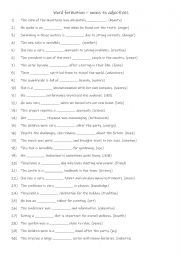
|
A2+-B1 Word formation � nouns to adjectives
Learning word formation, specifically transforming nouns to adjectives, is essential for expanding vocabulary and improving language flexibility. It allows students to describe people, things, or concepts in more detail, enhancing their ability to communicate effectively. Mastering this skill helps create more varied and precise expressions, contri...
Level: elementary
Age: 8-100
Type:
Downloads: 125
|
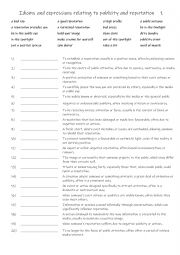
|
B1+-C1 Idioms and expressions relating to publicity and reputation 1
First, students need to familiarise themselves with the 20 idioms and expressions and their meanings. Then they read the definitions to see which one is being described and write that word in the space provided Answers on page 2.
Level: intermediate
Age: 12-100
Type:
Downloads: 113
|












